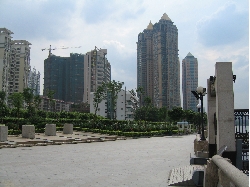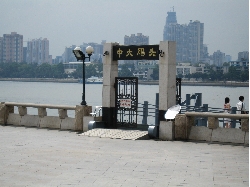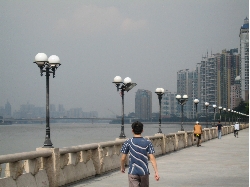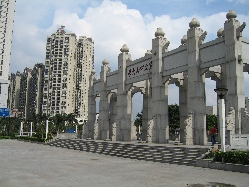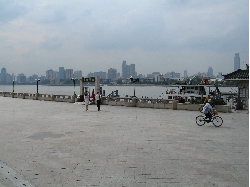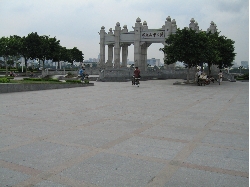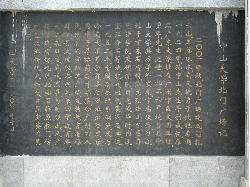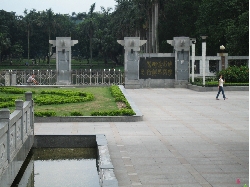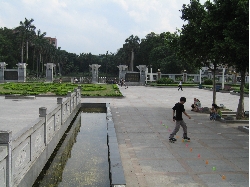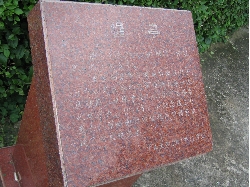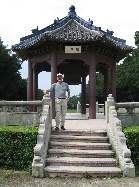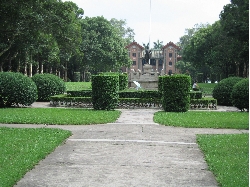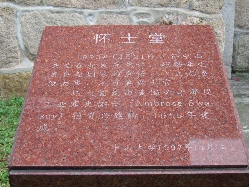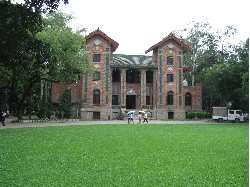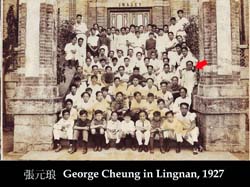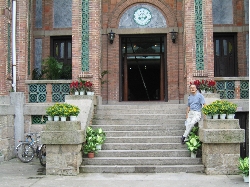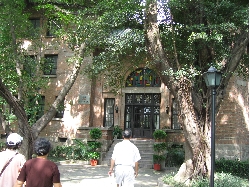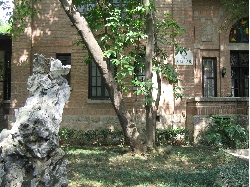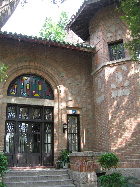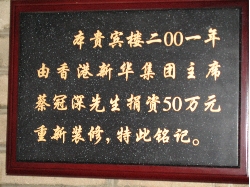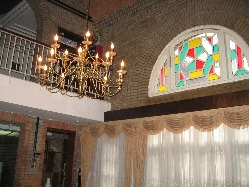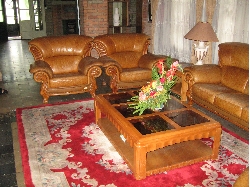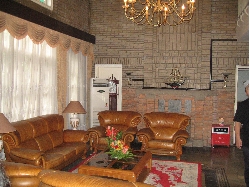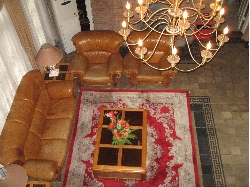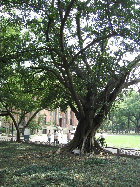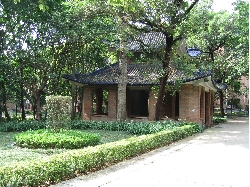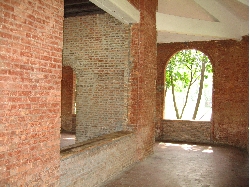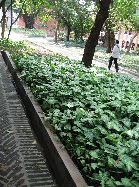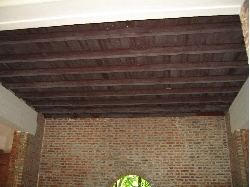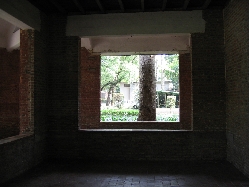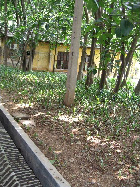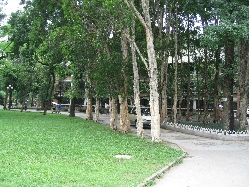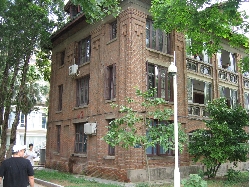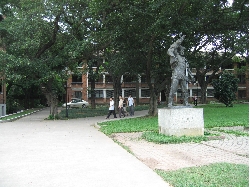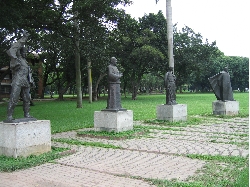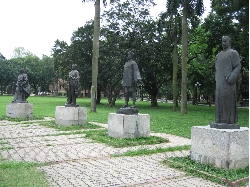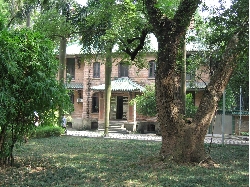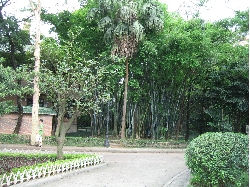I'm the youngest of the five siblings. By the time I was capable to understand human relationships, no one in the family had the interest to repeat those family history to me anymore. The interruption by the Japanese occupation of Hong Kong was not helpful a single bit. Suffered by general shortage of everything, all adults in the family were busy daily in search of necessasities so that the family would not be starved to death. From the limited information I collected, I was always fascinated about my father's childhood life in Fiji and later his college life in Lingnan. In mid-May 2006, I had an opportunity to visit Hong Kong for 10 days. I expressed my desire to visit Lingnan to my friend. I told her that we should charter a taxi to roam around Lingnan and try to dig out my father's attendance record in their office. Not knowing the intricate development in modern China, my seemingly simple logistic could have turned into a major disaster. I was so fortunate to have my friend's timely help. I will discuss this in more detail in following paragraphs and in my acknowledgement at the end of this article.
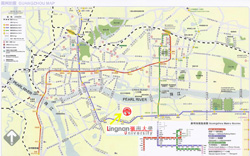 It
is very convenient and comfortable to travel
between Hong Kong and Guangzhou these days. For HK$190 per one-way ticket,
we boarded the 8:30am express train to leave KCR Hung Hum Station. A little
less than two hours later, we arrived our destination. Since the Immigration and
Custom checks were completed at the beginning of the trip, no hassle or stopping was necessary at the
crossing of the boarder. We simply walked out of the Guangzhou East Station
just like any regular commuters.
It
is very convenient and comfortable to travel
between Hong Kong and Guangzhou these days. For HK$190 per one-way ticket,
we boarded the 8:30am express train to leave KCR Hung Hum Station. A little
less than two hours later, we arrived our destination. Since the Immigration and
Custom checks were completed at the beginning of the trip, no hassle or stopping was necessary at the
crossing of the boarder. We simply walked out of the Guangzhou East Station
just like any regular commuters.
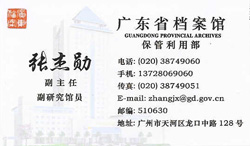 Like
clockwork, my friend's business partner, Mr. Mark Li, was at the station to
greet us. He led us to his van. On the way out of the station, he explained
to us that the school records were no longer stored at Lingnan proper. For more than a decade, the local government centralized all historical document at
the Guangdong Provincial Archives. Mark's mother happens to have just
retired from the top position of that organization. She requested the staff
to start digging one day before our arrival. After we parked near a majestic
new building, we signed in at the lobby and were led to the library. On one
table, there was an open file. My father's record was shown on the opened
page. We were so impressed by their efficiency and courtesy. I was deeply
indebted to
張杰勛女仕's dedication and professionalism. At that time, we were
in Guangzhou for only a little more than an hour. Without
張女仕
and Mark's help, we would have definitely returned to Hong Kong empty
handed.
Like
clockwork, my friend's business partner, Mr. Mark Li, was at the station to
greet us. He led us to his van. On the way out of the station, he explained
to us that the school records were no longer stored at Lingnan proper. For more than a decade, the local government centralized all historical document at
the Guangdong Provincial Archives. Mark's mother happens to have just
retired from the top position of that organization. She requested the staff
to start digging one day before our arrival. After we parked near a majestic
new building, we signed in at the lobby and were led to the library. On one
table, there was an open file. My father's record was shown on the opened
page. We were so impressed by their efficiency and courtesy. I was deeply
indebted to
張杰勛女仕's dedication and professionalism. At that time, we were
in Guangzhou for only a little more than an hour. Without
張女仕
and Mark's help, we would have definitely returned to Hong Kong empty
handed.
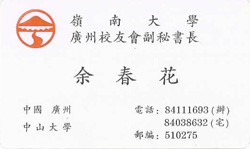 After
a good lunch with Mark's wife, Susan, at a plush restaurant in a new development
area, Mark brought us to
Lingnan University. We went into the Lingnan Alumni Association's office
and were met by
溫建中
先生
(General Secretary), and
余春花
女仕(Vice
General Secretary). They gave us a thorough briefing about the student lives
in the '30s and some general history of the University. They confirmed
some of the stories I heard from my father. Later, they gave us a guided
tour of the campus. It was a hot and sunny day. The hosts secured a van to
transport us around the campus. That certainly make it easier on me and we
were able to see a lot more of the campus. Their warm welcome and
hospitality were deeply appreciated.
After
a good lunch with Mark's wife, Susan, at a plush restaurant in a new development
area, Mark brought us to
Lingnan University. We went into the Lingnan Alumni Association's office
and were met by
溫建中
先生
(General Secretary), and
余春花
女仕(Vice
General Secretary). They gave us a thorough briefing about the student lives
in the '30s and some general history of the University. They confirmed
some of the stories I heard from my father. Later, they gave us a guided
tour of the campus. It was a hot and sunny day. The hosts secured a van to
transport us around the campus. That certainly make it easier on me and we
were able to see a lot more of the campus. Their warm welcome and
hospitality were deeply appreciated.
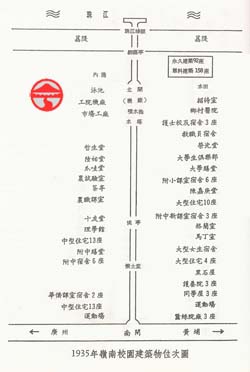 The size of the campus is similar to a typical junior college in the United States. Many original
historical buildings remain on campus and they are in pristine condition. The classrooms, dormitories, tea house, Swasey Hall where my father visited most frequent are still standing. In the middle of the campus are two parallel roads, running in North-South
direction, leading from one end of the campus to the other. The roads are lined with beautiful oak,
pine, leechi, willow,...trees. These roads are the main artery thoroughfare through the campus. In between these roads is a long stretch of green lawns and gardens, occasionally interrupted by single structures such as Sing Pagoda and Swasey Hall.
Groups of buildings are
clustered along the side of the roads.
The size of the campus is similar to a typical junior college in the United States. Many original
historical buildings remain on campus and they are in pristine condition. The classrooms, dormitories, tea house, Swasey Hall where my father visited most frequent are still standing. In the middle of the campus are two parallel roads, running in North-South
direction, leading from one end of the campus to the other. The roads are lined with beautiful oak,
pine, leechi, willow,...trees. These roads are the main artery thoroughfare through the campus. In between these roads is a long stretch of green lawns and gardens, occasionally interrupted by single structures such as Sing Pagoda and Swasey Hall.
Groups of buildings are
clustered along the side of the roads.
The north boundary of the campus is the Pearl River. Along the river is a beautiful promenade. A small dock stands alone right across from the North entrance arch. I'm sure the dock has been renovated many times since 1930's. But I can still envision my father taking the tiny wooden ferry to cross the river back to his residence in 西關, during the school breaks. More changes are the surrounding modern high-rise residential buildings encroach the campus and makes it look like the Central Park in New York City.
Lingnan was one time spearheading in agricultural research, especially in rice, corn and sugar cane. The campus has its own orchard and cattle farms. They owned a herd of Holsteins cows. One can still witness reminiscence from the past, i.e. silk factory, fruit orchards, laboratories and dairy farm. I was told that in the old days, the dairy products consumed on campus were produced right at the school. In fact, during the WWII turmoil, that may have saved many people from their misery.
